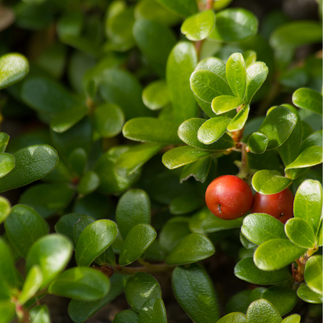Three Backyard Herbs for the Holiday Season
- Cole Schoonover
- Dec 14, 2023
- 3 min read
Updated: Dec 10, 2024

The holiday season can be difficult for some of us, habits are thrown off by rich food, increased drinking, social occasions, and altered sleep patterns. Though it can be an incredibly joyous time of year, we find ourselves paying the price for our choices later. That is because many of these changes apply additional burdens on the body. For example, excessive drinking and consumption of fatty foods puts an exorbitant demand on the liver, therefore extending hangovers and limiting digestion.
What if I told you that it is possible to enjoy your holiday, and avoid the post-holiday woes?
Herbal Medicine is the answer!
As a holistic practitioner, I believe in the 80/20 rule; treat your body like a temple 80% of the time - and the other 20%? Enjoy it, stress free. Herbs are amazing allies in supporting our bodies while we enjoy that 20% free from guilt. So relax and have a joyous holiday season because these herbs got your back!
These herbs were selected herbs for their medicinal properties and their accessibility. All three herbs are either grown in many folk’s gardens right here in the Pacific Northwest or are accessible in most health food stores. Further, they can be harvested year-round and provide excellent assistance against hangovers, low or irritable mood, and irregular eating habits.
Three Herbs to Fight the Holiday Woes
1. Calendula (Calendula officinalis)
As of writing this mid-December I still have a beautiful Calendula plant blooming in my front yard! It is an annual that is both striking and incredibly hardy. Not only that, but it is beloved by pollinators and brings a show to the garden every year.
Calendula is a favoured herb for the holiday season because of the wide range of benefits it has. Calendula is great at healing and soothing irritated tissues making it excellent for irritated gut concerns. It also works well at clearing the body of waste by activating the liver and stimulating lymphatic flow.
2. Rosemary (Rosmarinus officinalis)
Rosemary is a showy, hardy shrub that performs as an evergreen here in the Comox Valley. Rosemary does not like wet feet, so when planting it here in the rainforest, ensure you have the appropriate location set first. Bountiful with flowers and pollinators come spring, it is a favourite herb to grow for its aromatic flavour and medicinal activity.
Rosemary is a herb for the mind and gut. It relieves mental tensions, stimulates digestive secretions and encourages effective liver function. Rosemary is a very potent herb, not a lot is needed to get a strong effect, so when blending your teas start with less Rosemary.
3. Uva-ursi (Arctostaphylos uva-ursi)
Uva-ursi, also known locally as kinnikinnick, is native to the Pacific Northwest and is incredibly common to find growing on the forest floor creating a ground cover with Oregon Grape (Mahonia aquifolium) and Salal (Gaultheria shallon). Frequently employed for the same purpose in gardens, this plant works well in locations where it can be challenging to grow other plants due to its minimal growing requirements. Uva-ursi is probably one of the easiest and most bountiful crops I have ever grown.
Uva-ursi is one of the best herbs for addressing kidney or urinary concerns. It has been used as such by the indigenous peoples of the Salish Sea for this purpose for centuries. Supporting your second most important detoxification organ (your kidneys), Uva-ursi is a favoured herb for people suffering from UTIs to kidney stones.
Support your body this holiday season, and blend up a locally grown holiday tea!
No time to make your own? Check out my Innate Detox Tea. It supports all detoxification pathways, improves digestion AND tastes good!
References
American Botanical Council. (2000). Calendula flowers. Retrieved from http://cms.herbalgram.org/expandedE/Calendulaflower.html
American Botanical Council. (2000).Rosemary leaf. http://cms.herbalgram.org/expandedE/Rosemaryleaf.html
American Botanical Council. (2000). Uva Ursi leaf. http://cms.herbalgram.org/expandedE/UvaUrsileaf.html






















Comments